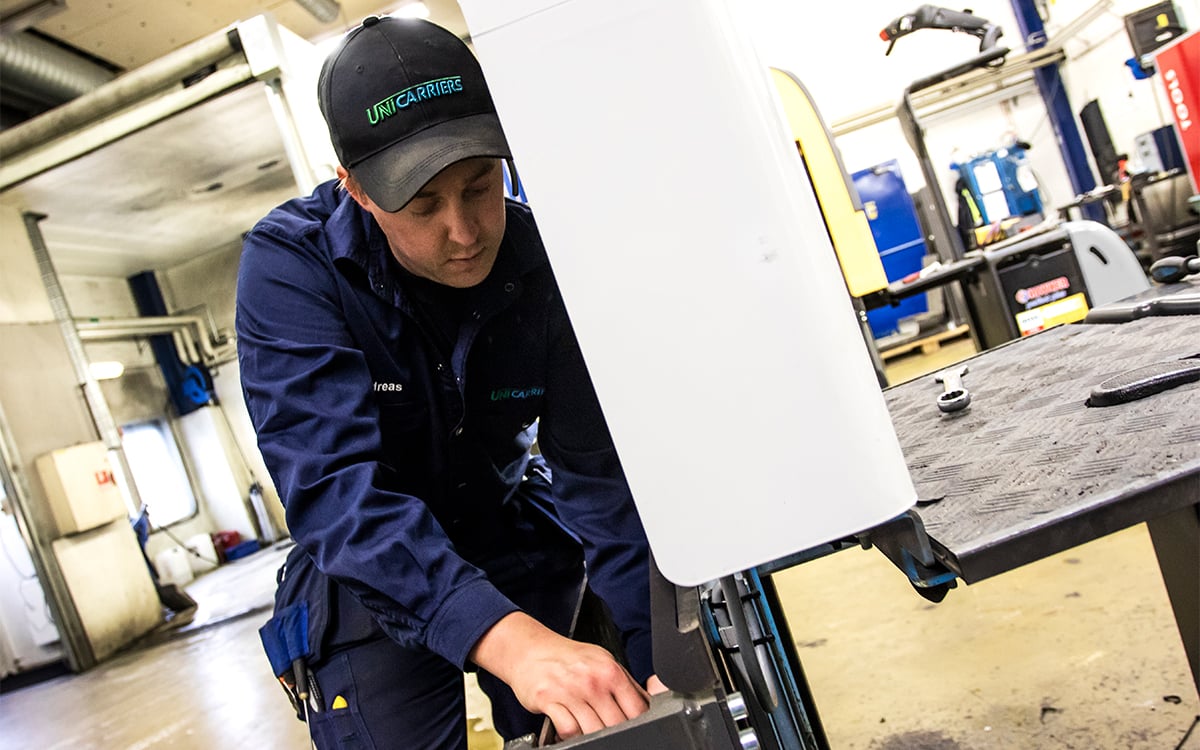
There's many ways that the carbon footprint of a materials handling operation can be reduced. Using electric trucks instead of IC trucks brings down emissions, for example, and energy can be saved by choosing more eco-friendly heating and lighting systems.
However, if you want to reduce the carbon footprint of your company's forklift service operation, then choosing a service partner with a high first visit fix rate (FVFR) is a great solution. How? It's fairly simple — a service supplier which has a higher FVFR will need fewer trips from their facility to yours in order to fix your truck. A lower FVFR means they will need to make more trips. If you have a large fleet and need service regularly, these extra trips can add up, and become quite costly in terms of time and emissions.
Let's look at a rough example. We'll compare two forklift service suppliers — Supplier A, which has a 95% FVFR, and Supplier B, which has 85%. Both suppliers deal with a company which has a fleet of 100 trucks, each of which have two unforseen stops per year, resulting in 200 service requests per year for each supplier. For the purposes of the demonstration, we'll assume that figures like the average driving distance per service visit and the service van fuel consumption are the same for both suppliers.
| Supplier A — 95% FVFR | Supplier B — 85% FVFR | |
| Number of breakdowns in fleet per year | 200 | 200 |
| FVFR | 95% | 85% |
| Percentage of breakdowns requiring a second visit | 5% | 15% |
| Total number of visits to maintain fleet per year | 210 | 230 |
| Average driving distance per service visit (km) | 30 | 30 |
| Average fuel consumption for service van (litres / 100km) | 9 | 9 |
| Fuel consumption per visit (litres) | 2.7 | 2.7 |
| Total fuel consumption to maintain fleet per year (litres) |
567 | 621 |
| Emissions per kilometre (mg) |
238 | 238 |
| Total emissions to maintain fleet per year (kg) |
1499.4 | 1642.2 |
Supplier B emits 142.8kg more CO2 than Supplier A every year because of its worse FVFR — that's a difference of 9.5%
Again, this example above is just a demonstration. In reality, some of the key figures will vary based on the supplier. However, the basic fact is still there — the higher a supplier's FVFR, the fewer service visits they have to make, and the less CO2 is emitted by service vans.
So, simply by choosing a supplier with a better FVFR, you could potentially reduce the carbon footprint of the service process by almost 10%. For any company which is concerned with the environment or has corporate environmental policies to follow, this could be a big improvement.
For more information on FVFR and other factors which you should consider when choosing a service partner, click the button below to get our free guide, What to expect from your service supplier. Just fill out the very short form on the next page and it's yours.






































Comment